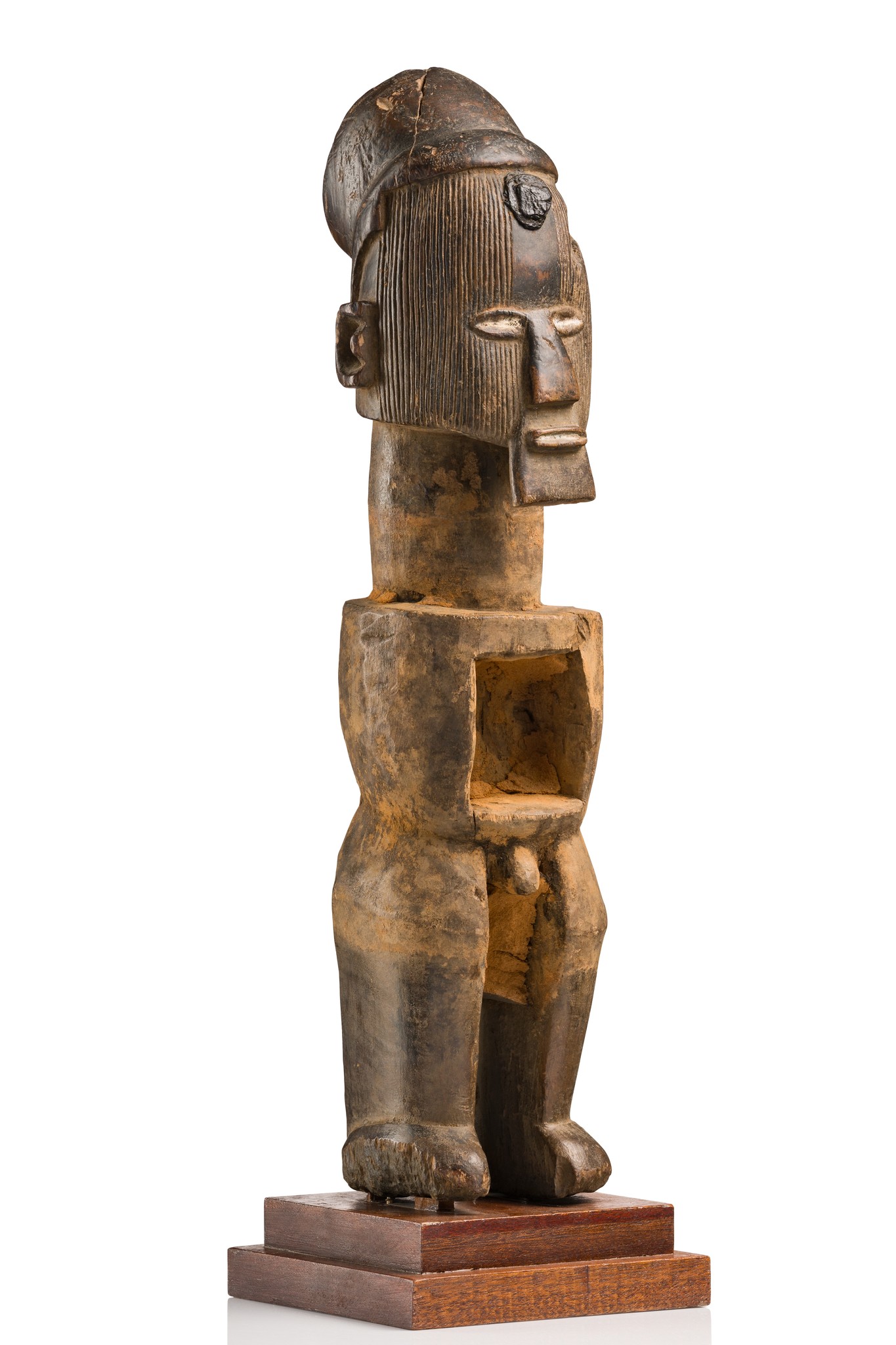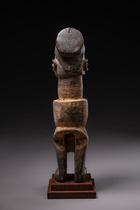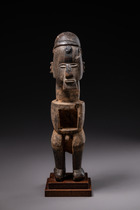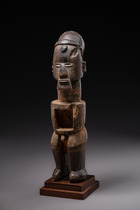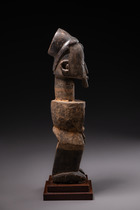Figure magique masculine "buti" · R. D. Congo, Teke · ID: 3052291
Rolf Kunitsch, Münster, Germany
Description
wood, red “tukula” powder, clay, black paste, kaolin, base
In general, the Teke saw themselves as dependent on the power of the spirits as well as on the power of the ancestors.
The spirits are the mediators between God and humans. They require cultic veneration because they can bring about good and evil. The hut-like shrines of the spirit figures were often found on the outskirts of villages, where offerings were made to them.
Anthropomorphic statues, “buti” (“butti”), represent the ancestors and are, as it were, containers for their souls. Their barrel- or sphere-shaped magical charge, called “bilongo” or “bonga”, therefore often contain physical remains of the ancestors, such as hair or fingernails.
The cultic use determines the composition of the magical contents, which are put together by the “nganga” and decide on the effectiveness of the ritual figures. The external appearance of the Teke sculptures gives no indication of the purpose for which they were made. Figures that had not help in the hoped-for sense against illness, hunting accidents and other misfortunes were destroyed or thrown away without much respect (according to Korinthenberg, 2021, p. 13 ff.).
L’objet Figure magique masculine “buti” numéro d’objet 3052291, a fait partie de la dernière Vente aux enchères 105 du 15 novembre 2025 le Zemanek-Münster Hôtel des ventes. L’objet portant le numéro de lot 378 a atteint un prix de vente de 1 000 €.
Vous trouverez d’autres Figures et autres types d’objets populaires sur nos pages thématiques associées. Notre page sur le thème Art africain pourrait également vous intéresser.
Littérature comparée
Korinthenberg, G., ed. by H. Simonis, Teke, Köln 2021, p. 13 ff.

